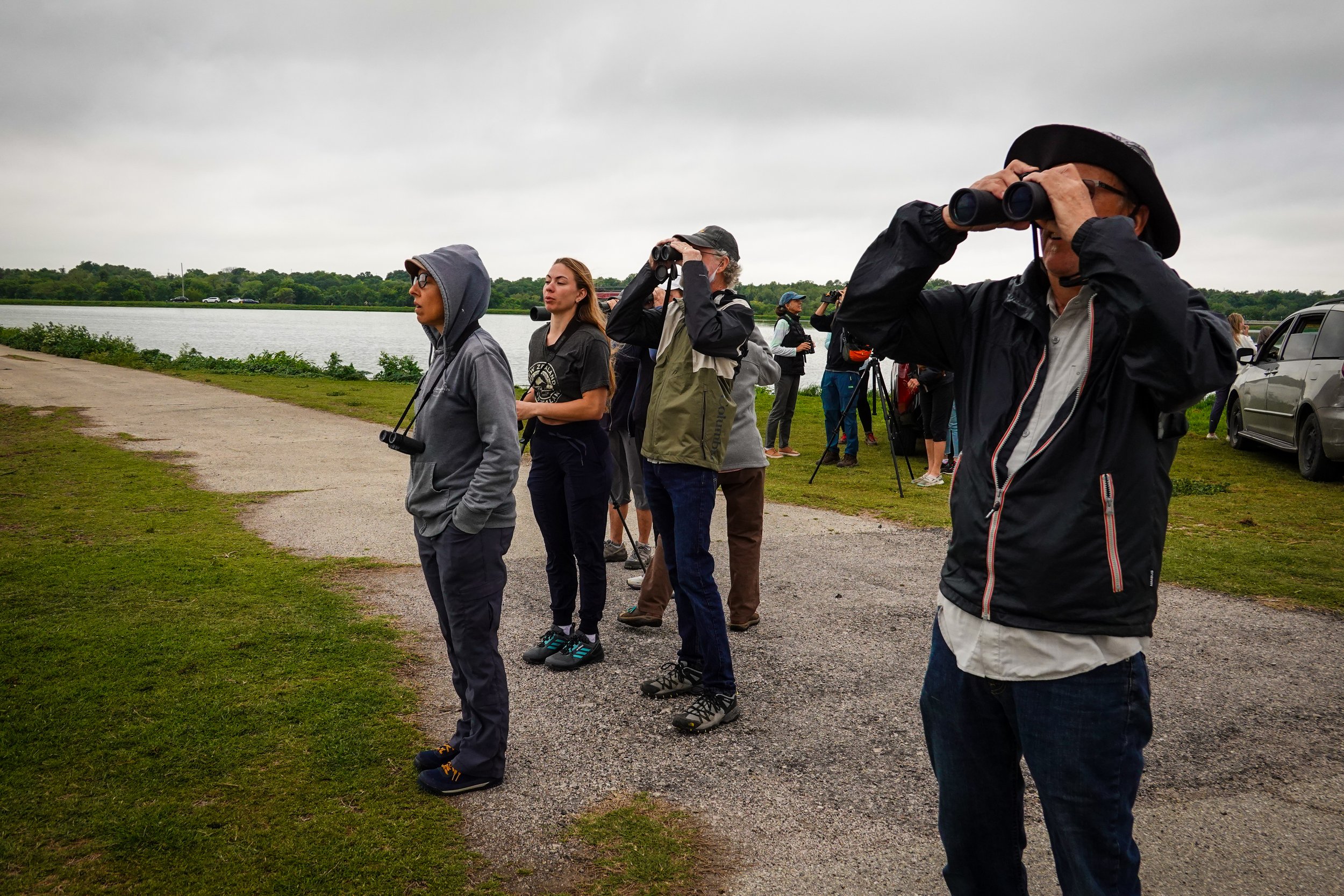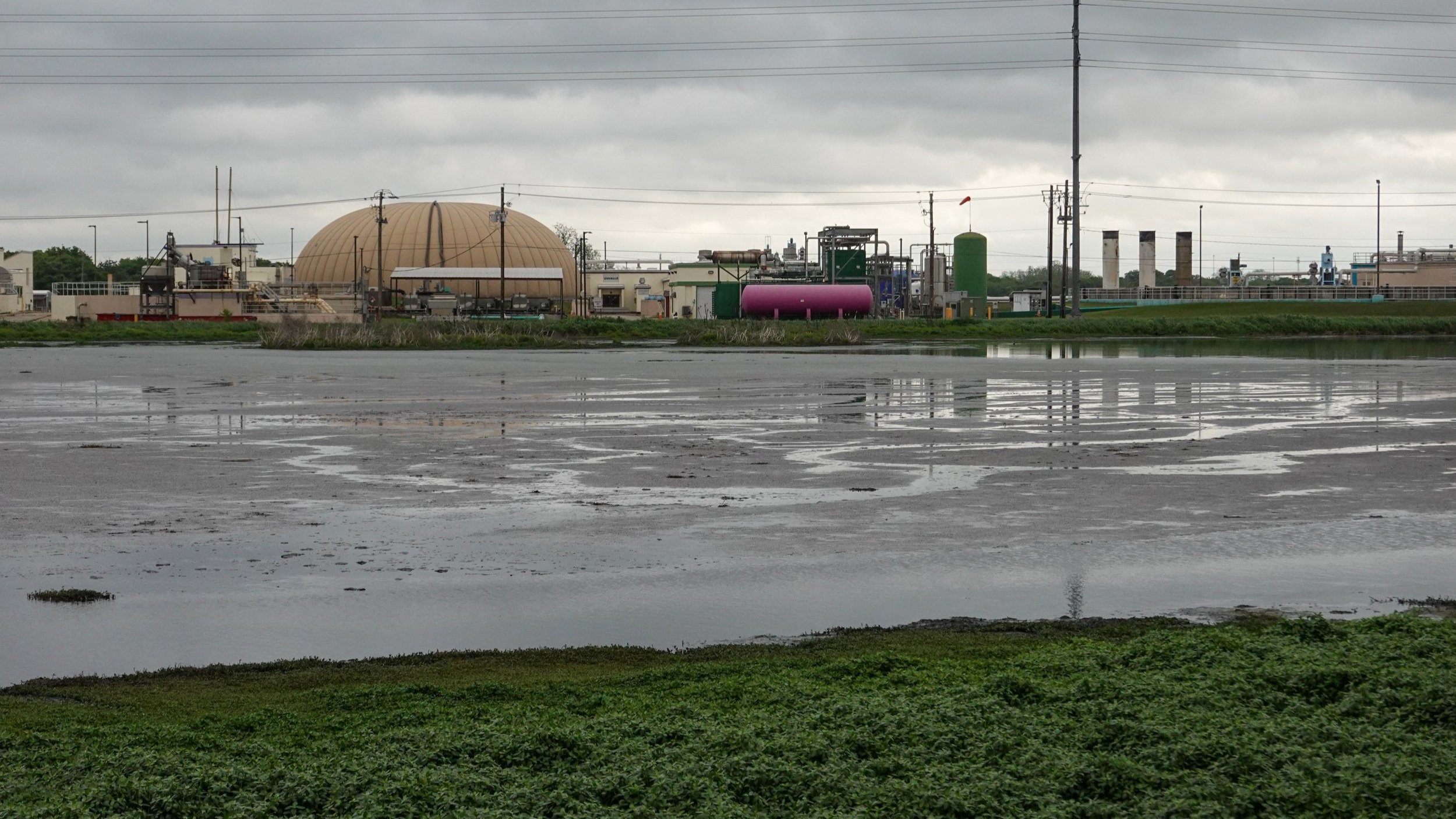Hornsby Bend
HCMN Class Site Visit
2024 HCMN class members and sponsors gather for the Hornsby Bend site visit, April 6, 2024. Photo: courtesy Robert Moore
Robert Moore
About twenty Hays County Master Naturalist (HCMN) class members gathered in the Center for Environmental Research building parking lot for the Hornsby Bend site visit. This field trip was an introduction to birding for the group certifying as Master Naturalists. The weather was very windy and overcast and not great for birding, but we hoped for the best and soldiered on.
Hornsby Bend is an Austin Water Utility Biosolids Management Plant. Austin Water partnered with the University of Texas and Texas A&M University to create the Center for Environmental Research at Hornsby Bend to support urban ecology and sustainability studies for Austin. Out of that partnership grew the Bird Observatory program, which promotes the study and understanding of birds at Hornsby Bend and is open to the public. Birders have been flocking to Hornsby Bend since 1959. https://www.austintexas.gov/department/center-environmental-research
HCMN David Womer was introduced as our guide, and he outlined the flow of the site visit. Photo: courtesy Robert Moore
We shared rides to minimize site traffic and visited several of the ponds on the site.
Off to the "wilds" for birding. Photo: courtesy Robert Moore
Unfortunately, not so good birding weather, but birders…bird! Photo: courtesy Robert Moore
Most sighted were Northern Shoveler ducks, Least Sandpipers, and American Coots. View the 26-species eBird checklist online here.
Northern Shovelers use their wide bills to scoop up food in a lagoon at Hornsby Bend, April 7, 2018. Photos: courtesy Betsy Cross
At each stop, David and other experienced birders clued us in on the various tools available to birders and shared tips and tricks to make things easier. Photo: courtesy Robert Moore
Portable field guides, either paper or phone apps, help with visual identification. Birdsong recognition phone apps like Cornell’s Merlin app help identify birds by their sound, and crowd-sourcing apps like iNaturalist allow reaching out to the birding community for help classifying unknown birds.
Binoculars and spotting scopes were recommended as well. For starters, David recommended 8 x 42 binoculars for birding. The 8x magnification allows a wider field of view than more powerful 10x or 12x, making it easier to spot the birds with the glass, and the 42mm lens size lets in more light to help with color identification. David also demonstrated an easy way to find a bird in the binoculars: when you spot a bird with the naked eye, keep your gaze on the bird, and bring the binoculars to your eyes while keeping the head still. Simple, but effective, especially with higher-powered binoculars.
Blue-winged teal float on a glassy lagoon surface at Hornsby Bend, April 7, 2018. Photo: courtesy Betsy Cross
Classes such as this help novice birders improve their skills and provide opportunities to share the excitement of the sport of birding. We all enjoyed the camaraderie of sharing stories with other class members.
The serene beauty of Hornsby Bend? Photo: courtesy Robert Moore
It’s amazing that such a prosaic place as a biosolids treatment plant can provide such incredible birding opportunities—right in Austin’s backyard! Locations like Hornsby Bend are incredibly important to migratory and local bird species as the Austin metroplex continues to expand.









